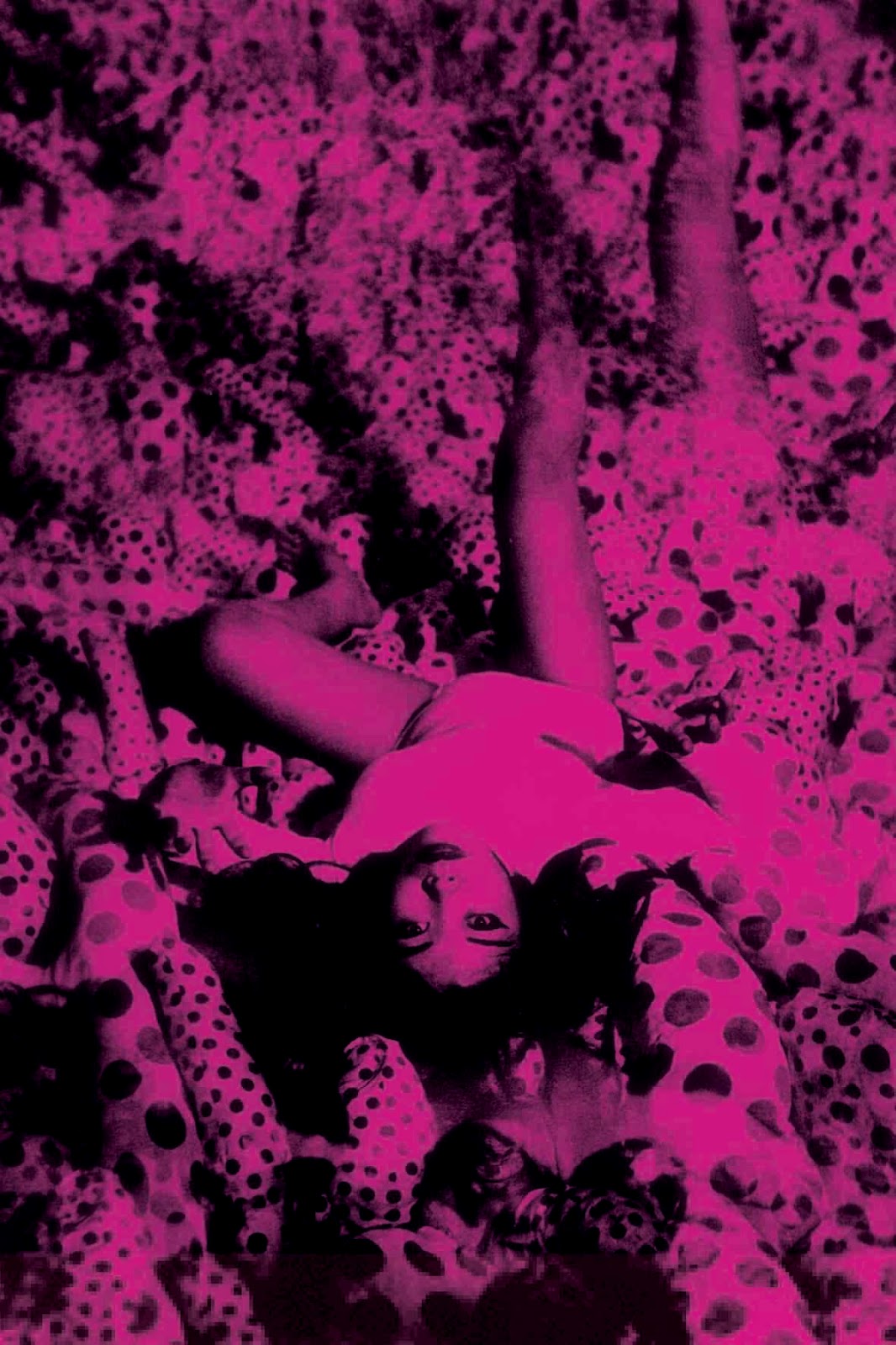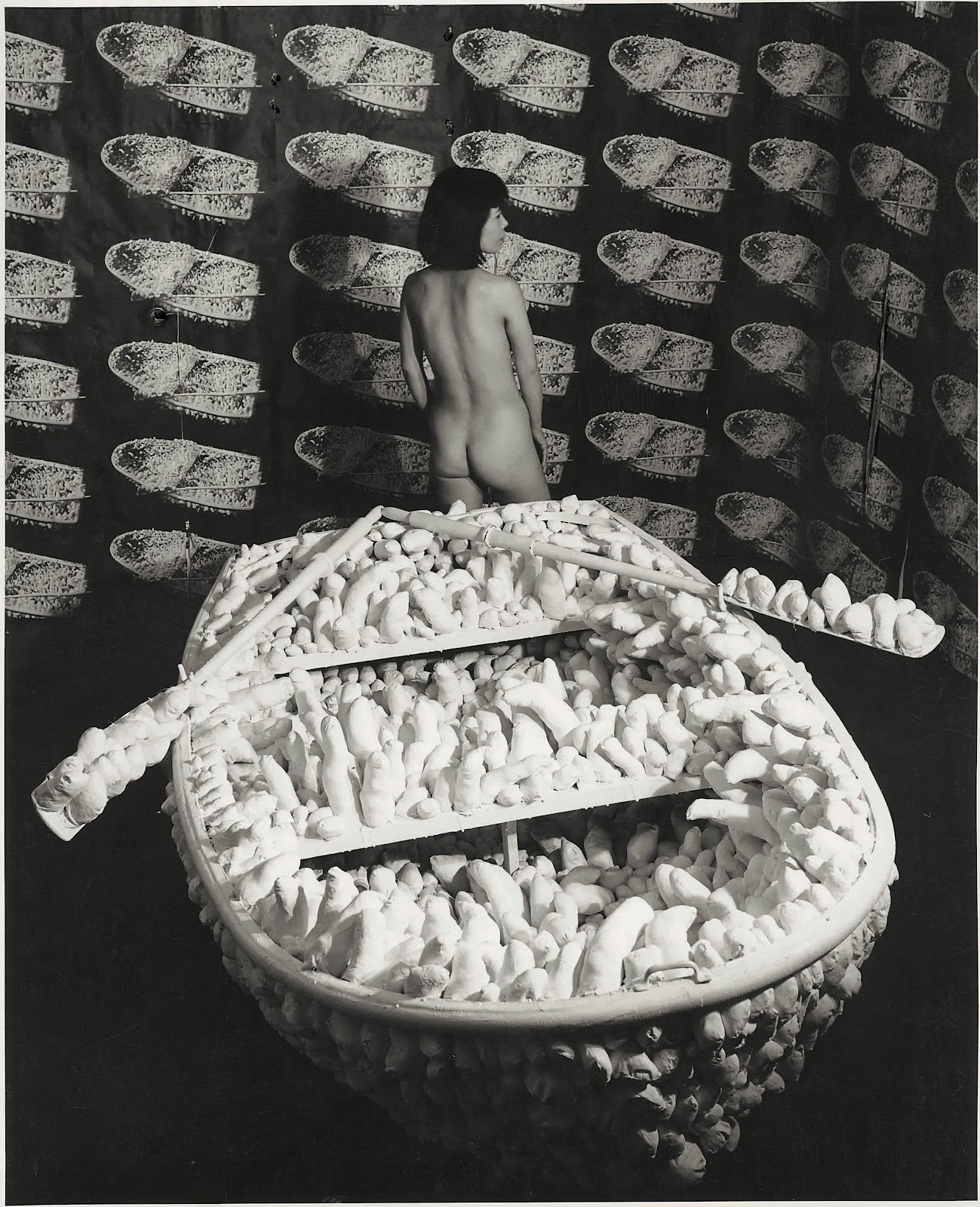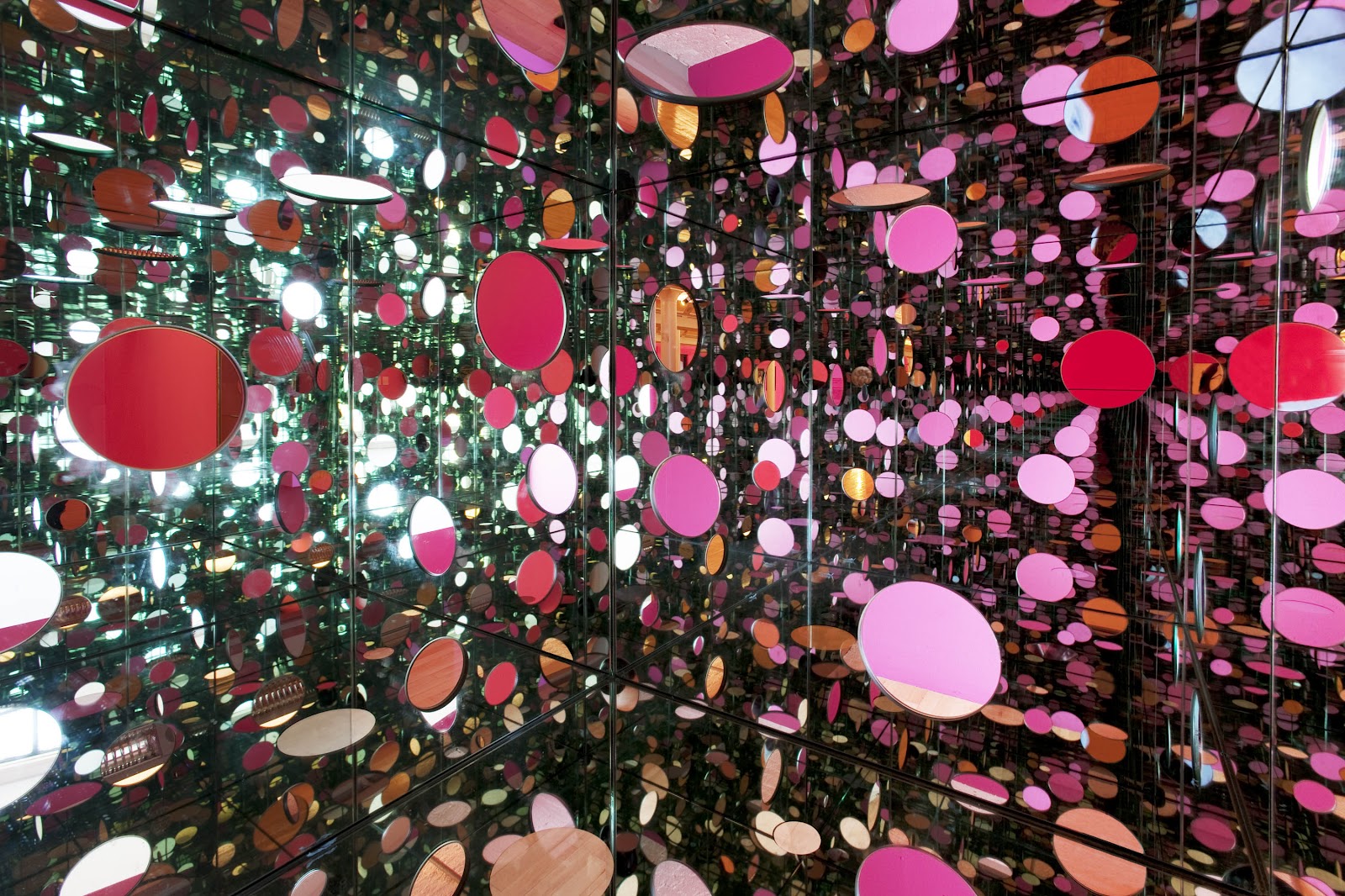13/02/12
Yayoi Kusama
Tate Modern
9 February – 5 June 2012
Yayoi Kusama (born 1929) is one of Japan’s best-known living artists, and certainly one of its greatest curiosities. Having voluntarily admitted herself to hospital back in 1977, she has remained living there to this day, and, as such, her rare appearance at the press view of Tate Modern’s current retrospective was a spectacle in its own right, with the international media going crazy for this diminutive, unassuming woman in a wheelchair, scarcely noticeable, in fact, had it not been for her vibrant red hair.
When Kusama undertook a year’s training in the traditional Japanese art of Nihonga painting in Kyoto in 1948, this was already a radical step for a woman at that time, and her daring developments, experimentations, performances, paintings, and installations since then have scarcely been less audacious. This exhibition seeks to highlight key turning points in her career, which spans over six decades, and concludes with a range of stunning new works, displayed here in London for the first time.

The first couple of rooms contain some of the few remaining examples of Kusama’s really early works from Japan, including her Nihonga style Lingering Dream (1949), a memento mori with decaying sunflowers with butterflies, in which the details on the veins are almost human, and vegetal and animal matter merge in a surreal and unsettling way. A set of 30 small works on paper follows, described by curator Frances Morris, as a ‘Pandora’s box of experimentation’, with watercolours and gouaches, ink, pastel and tempera, exploring not just colour and form, but also texture, through the use of frottage techniques.
In the mid-1950s, however, Kusama, having already received considerable critical acclaim in Japan, decided she wanted to leave for the United States. She arrived on the West Coast late in 1957 and moved to New York six months later. Here she was influenced by Abstract Expressionism, and began to produce a large-scale series of paintings entitled ‘Infinity Net’. Largely white, from a distance, these works only really become more interesting as you approach and look beyond and behind the surface. Repetitive brushstrokes, scalloped shapes, thick globules of white paint, as if squeezed directly from the tube, almost like toothpaste, these works offer a sense of movement across their surfaces, like writhing tadpoles or spermata.
In the early 1960s, Kusama began to work with sculptures, and her interest in the phallus increased. Aggregation: One Thousand Boats Show (1963), her first room installation, contains a white painted rowing boat, covered in phalli, and the neighbouring room, which contains a number of her ‘Sex Obsession’ and ‘Food Obsession’ Accumulation Sculptures from the following years are scarcely less phallocentric: furniture, shoes, clothes – nothing escapes her penile adornment.

As the sixties progressed, and hippie culture took hold, however, Kusama adapted herself once again, and began exploring the medium of performance art. She held various Body Festivals in which naked participants were encouraged to paint polka dots on each other’s bodies, on animals, and on plants, and to engage in orgy parties. Her film, Kusama’s Self-Obliteration (1968), which was a hit on the arthouse festival circuit at the time, documents these events, to a chant-like soundtrack by pop-rock band The C.I.A. Change, with such slow moving imagery, that, I have to confess, for me, it verges on generating a sense of tedium.
Perhaps it was all too much excess for Kusama as well, since, in 1973, she decided to return home to Japan, a move which she found it hard to adapt to. She was also hugely impacted by the death of her close friend, American artist, Joseph Cornell, with whom she had enjoyed what she describes as a romantic and passionate, but platonic relationship.
After moving in to the hospital in 1977, she set up a studio within the medical faculty, and returned to making smaller scale sculptural objects by hand. Leftover Snow in the Dream (1982) is a disturbing construction of plasticine, wood, and paint, resembling a display cabinet, stuffed full of oversized embryos, packed in place by phalli. This corporeal theme continues also in her paintings from the following decades, which fill the canvases with overly complex biomorphic forms, reminiscent of her earlier tadpole/spermata motifs, and continue with her trend of obsessive repetition, dense patterning, and layering.

Kusama is probably best known, however, for her ‘immersive environments’, large-scale full-room installations which transport the viewer into another world. I’m Here, but Nothing (2000) is a darkened room, set up like any normal living room space, complete with television, shelving unit, tables, chairs, sofa, lamps, but lit solely by fluorescent polka dots. One step further, and created especially for this show, is Infinity Mirrored Room – Filled with the Brilliance of Life (2011), a magical and entrancing end to the chronological tour through this hypnotic woman’s life. A small dark passage, covered on the walls, floors, and ceilings by mirrors, and hung with a myriad tiny cherry tomato sized lights which flicker from one colour to another, reflecting in their millions, and stretching seemingly boundlessly into, indeed, an infinite space. This is the ultimate work, a crescendo which cannot be superseded. Whether or not Kusama is, herself, stuck in some 1960s hallucinatory trance, functioning purely on medication doled out by her doctors, or actually living a life of such sheer brilliance, we will probably never know, but, whatever the secret, it is one which is a pleasure for the visitor to be permitted to experience, even if only for a short while.
Images:
Yayoi Kusama
1965
Courtesy of Victoria Miro Gallery, London and Ota Fine Arts, Tokyo
© Yayoi Kusama, courtesy Yayoi Kusama studio inc.
Photo: Eikoh Hosoe
Kusama posing in Aggregation – One Thousand Boats Show
1963
Installation view, Gertrude Stein Gallery, New York 1963
© Yayoi Kusama and © Yayoi Kusama Studios Inc.
The Passing Winter (detail)
2005
© Tate
Presented by the Asia Pacific Acquisitions Committee 2008
Photo: Tate Photography
Also published at: http://www.rovesandroams.com/2012/02/yayoi-kusama-at-tate-modern/